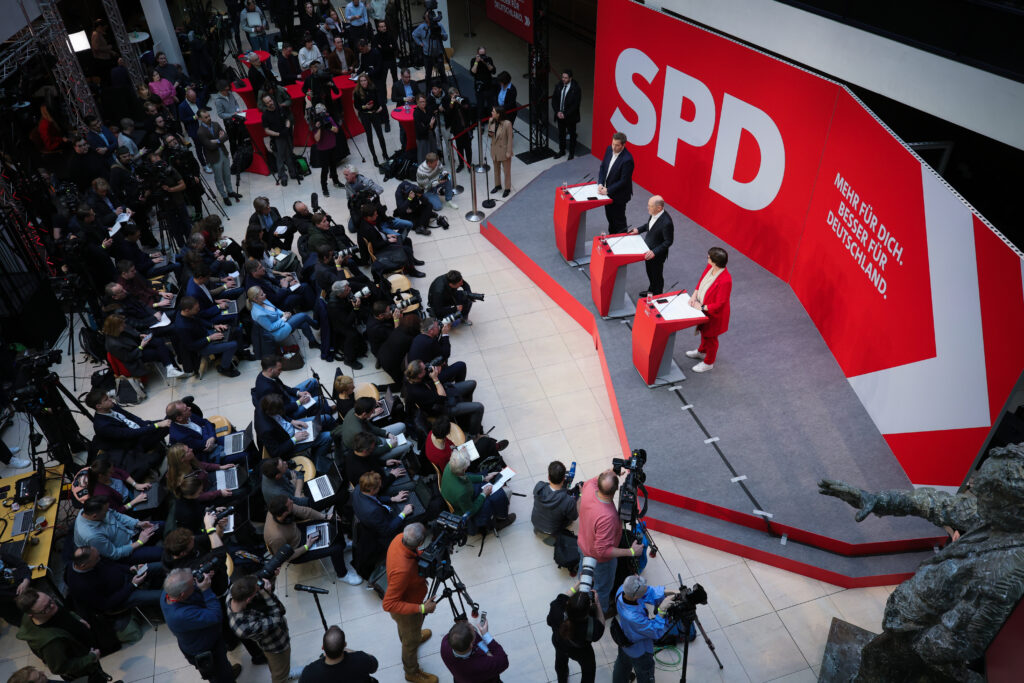With the incoming Merz administration’s focus on more military spending, tax cuts, welfare cuts and migration curbs, the SPD’s pain will be even more acute. Even though Scholz will be out of the picture, the dilemmas faced by his party will remain. And what exactly does a center-left party stand for when both the far right and the far left can appropriate its voters?
The Greens, meanwhile, will now have a holiday from the terrible compromises required of governance, and can lick their wounds. A party synonymous with tackling climate change, the Greens relegated their central theme to an afterthought during their election campaign. And while that may have made immediate sense at the time, with climate activism being denounced by mainstream politicians and media alike, the tactic failed to galvanize the party’s core and to attract new voters.
 The SPD’s stunning all-time low result of 16.4 percent demonstrates the extent to which it’s being punished for the failures of the last administration. | Andreas Rentz/Getty Images
The SPD’s stunning all-time low result of 16.4 percent demonstrates the extent to which it’s being punished for the failures of the last administration. | Andreas Rentz/Getty Images
The Greens’ principled position in support of Ukraine and defense spending also divided its members, some of whom still cling to the “salon pacifism” of old. With outgoing Minister for Economic Affairs Robert Habeck calling time on his political career at the age of 55, left among the party’s so-called realos — its moderate wing — is outgoing Minister for Foreign Affairs Annalena Baerbock, who performed well under difficult circumstances. But we will now likely see the party’s fundis — its radical wing — use the “purity” of opposition to push a more uncompromising agenda.
Finally, we come to the Free Democrats (FDP), the third party of the soon-to-be-disbanded “traffic light” coalition. A party that now faces oblivion. For Germany, the FDP have always been a curiosity. Its starting point — pro-enterprise, low tax, low regulation — would be considered mainstream in many other countries, particularly Anglo-Saxon ones, but here in Germany, it’s long been regarded as a fringe position.
This isn’t the first time FDP failed to meet the 5 percent threshold required for representation in the Bundestag. But with Merz shunting the CDU away from its former centrism and toward more free-market principles, the FDP has nowhere to go. Out of parliament, the party will also have far less media exposure. But at least its leader, former Minister of Finance Christian Lindner — the guiltiest of the various guilty men (and yes, they were all men) who undermined the last government — will be gone.
When the Federal Republic was formed in 1949, it was to contain three parties: the CDU, the FDP and the SPD – representing the center left, middle and center right. The political space wouldn’t accommodate, let alone tolerate, others. The Greens then joined several decades later and have long been considered part of the political establishment. But now, everything has changed, and new parties on the extremes menace the status quo.
So, Merz has four to five years not just to breathe new life into the CDU, but to ensure the country’s political constellation isn’t broken for good.
